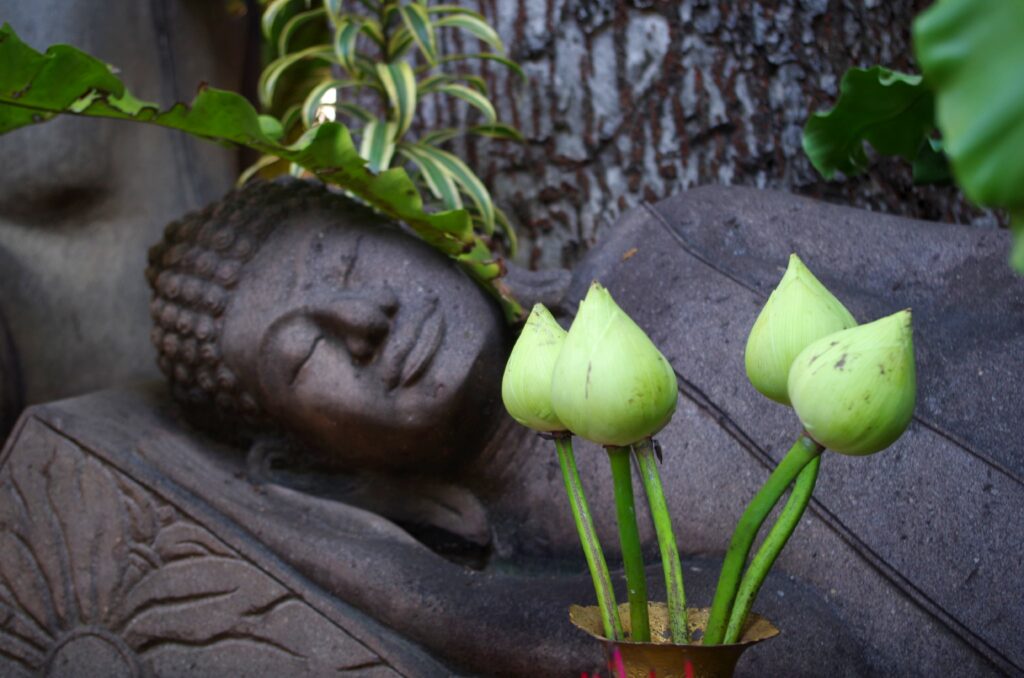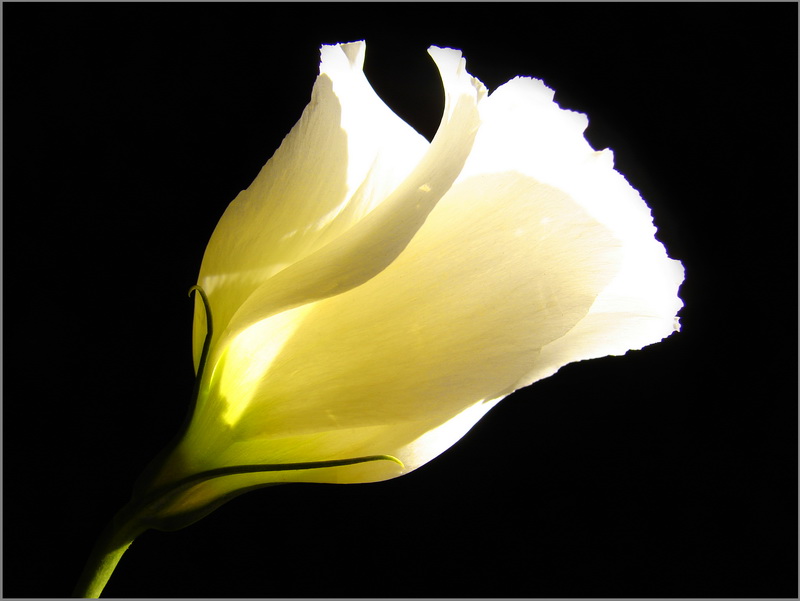
Unnoticed Beauty
The truly faithful
do not discriminate
and they are not confused,
for they penetrate
the illusion of diversity
and see only
the unity and beauty of
emptiness
which is real.

The truly faithful
do not discriminate
and they are not confused,
for they penetrate
the illusion of diversity
and see only
the unity and beauty of
emptiness
which is real.

Hope is Life & Life is Hope…
Seek not to add years to your life, add life to your years…

Patience alone can’t describe all the characteristics and deep meanings associated with the Turtle, however if the word Patience is analyzed in more depth, it will reveal a lot of the relative concepts which either they relies on it or completes their true meanings…
Turtle is a symbol of steadfastness and tranquility in religion, mythology, and folklore from around the world. A tortoise’s longevity is suggested by its long lifespan and its shell, which was thought to protect it from any foe. In the creation myths of several cultures, the turtle or tortoise carries the world upon its back or supports the heavens. In Chinese tradition the creator goddess Nu Gua cuts the legs off a sea turtle and uses them to prop up the sky after Gong Gong destroys the mountain that had supported the sky. The flat undershell and round domed upper shell of a turtle resembles the ancient Chinese idea of a flat earth and round domed sky. The World Turtle carries the Earth upon its back in myths from North America. In Cheyenne tradition, the great creator spirit Maheo kneads some mud he takes from a coot’s beak until it expands so much that only Old Grandmother Turtle can support it on her back. In Mohawk tradition, the trembling or shaking of the Earth is thought of as a sign that the World Turtle is stretching beneath the great weight that she carries.
In a story from Admiralty Island, people are born from eggs laid by the World Turtle. There are many similar creation stories throughout Polynesia. Turtles and tortoises are incorporated into many religious traditions and mythologies around the world. In ancient Mesopotamia, the turtle was associated with the god Ea and was used on kudurrus as a symbol of Ea. Ijapa the tortoise is a trickster in a cycle of tales told by the Yoruba of Africa. In Hindu mythology the world is thought to rest on the backs of four elephants, who stand on the shell of a turtle. In Hinduism, Akupara is a tortoise who carries the world on his back. It upholds the Earth and the sea. One avatar of Vishnu is said to be the giant turtle Kurma. The Sri Kurmam Temple in Andhra Pradesh, India is dedicated to the Kurma-avatar.
In China, the tortoise is one of the “Four Fabulous Animals”, the most prominent beasts of China. It is of the water element. The other animals are the tiger, phoenix, and dragon. These animals govern the four points of the compass, with the Black Tortoise the ruler of the north, symbolizing endurance, strength, and longevity. Along with the Tiger, they are the only two of the four that is a real animal.
Patience requires Stillness and inner-tranquility… it needs a state of total prejudicelessness… a mind without any preoccupations about anything… so that it wouldn’t judge and decide hastily… and many other things… I may add more through time… but all of these elements have a close relation with each other in that they both need and feed each other…
You can find a lot of information on the Internet about the symbolism of Turtle in Mythology, Religion and various cultures…
You can read more about Tortoises, in I-Ching and Magic Squares

A Light in the Darkness / Ein Licht in der Dunkelheit
“Take a piece of glass, paint colours and forms on it, and put the same into a magic lantern, turn on a little light, and the colours and the forms painted on the glass are reproduced on the screen. If that light were not turned on, you would not see the colours of the slide on the screen.
“How are colours formed? By breaking up white light with a many-sided prism. So it is with a man’s character. It is seen when the Light of Life (God) is shining through it, i.e. in a man’s actions. If the man is sleeping or dead, you do not see his character. Only when the Light of Life is animating the character and causing it to act in a thousand different ways, in response to its contact with this many-sided world, can you perceive a man’s character. If white light had not been broken up and put into forms and shapes on our magic lantern slide, we should never have known that there was a piece of glass in front of the light, for the light would have shone clearly through. In a sense that white light was marred, and had some of its clearness taken from it by having to shine through the colours on the glass.
“So it is with an ordinary man. His mind is like the screen. On it shines light, dulled and changed because he has allowed the many-sided world to stand in the way of the Light (God) and broken it up. He sees only the effects of the Light (God) instead of the Light (God) Himself, and his mind reflects the effects he sees just as the screen reflects the colours on the glass. Take away the prism and the colours vanish, absorbed back into the white light from whence they came. Take away the colours from the slide and the light shines clearly through. Take away from our sight the world of effects we see, and let us look only into the cause, and we shall see the Light (God).
“A Master in meditation, though the eyes and ears be open, fixes his attention so firmly on ‘That which sees’ that he neither sees nor hears, nor has any physical consciousness at all — nor mental either, but only spiritual.
“We must take away the world, which causes our doubts, which clouds our mind, and the light of God will shine clearly through. How is the world taken away? When, for example, instead of seeing a man you see and say, ‘This is God animating a body’, which body answers, more or less perfectly, to the directions of God, as a ship answers more or less perfectly to her helm.
———
A passage taken from the book “Ramana Maharshi and The Path of Self Knowledge”, by ARTHUR OSBORNE, from a letter written to a friend in London by F. H. Humphreys and published by her in the International Psychic Gazette, London.

Ranunculus Repens (Creeping Buttercup) or Ranunculus Bulbosus, commonly known as “St. Anthony’s turnip” or “bulbous buttercup” and as “Alaleh” in persian, is a flowering plant in the buttercup family, native to Europe, Asia (esp. in highlands of Iran and Turkey) and northwestern Africa and a perennial weed of the Buttercup Family. It has attractive bright golden yellow flowers, 1.5–3 cm diameter, usually with 5-7 petals and deeply divided, three-lobed long-petioled basal leaves. Bulbous buttercup is known to form tufts. It grows in fields and pastures and prefers wet soil. The plant blooms from April to July.
The stems are 20-60 cm tall, erect, branching, and slightly hairy flowering. There are alternate and sessile leaves on the stem. The flower forms at the apex of the stems, and is shiny and yellow, which make it hard to photograph in the sunny weather.
Creeping Buttercup was sold in many parts of the world as an ornamental plant, and has now become an invasive species in many parts of the world.
Like most buttercups, R. repens is poisonous, although when dried with hay these poisons are lost. The taste of buttercups is acrid, so cattle avoid eating them. The plants then take advantage of the cropped ground around it to spread their stolon. Creeping buttercup also is spread through the transportation of hay. Contact with the sap of the plant can cause skin blistering.

Here’s a shot of a strange & acceptably rare species of flower, at least maybe in our country. Its from the Liliaceae (Lily) family. Scientific name of this flower is “Muscari commutatum”, & the common name for it is “Dark Grape Hyacinth” or “Narrow Leaved Grape Hyacinth”.
It truly has a strong odor & is slightly juicy & i feel its a little poisonous & not healthy to eat 😉 but however i think all the plants on earth are eatable but u can only eat some just once… 😀 u know…
Musk is the name originally given to a substance with a penetrating odor obtained from a gland of the male musk deer, which is situated between its stomach and genitals. The substance has been used as a popular perfume fixative since ancient times and is one of the most expensive animal products in the world.
The etymology of the name musk, originating from Sanskrit muská via Middle Persian mušk (Moshk), Late Greek -?????? (moschos), Late Latin muscus, Middle French musc and Middle English muske, hints at its trade route.
Muscari = Musk (or Moshk in persian), referring to the scent of its flowers (Greek); Musk, which as was explained above is a greasy secretion with a powerful odor, produced in a glandular sac beneath the skin of the abdomen of the male musk deer and used in the manufacture of perfumes.
commutatum = changeable, changed or changing; used for a species that is very similar to one already known. (Latin).